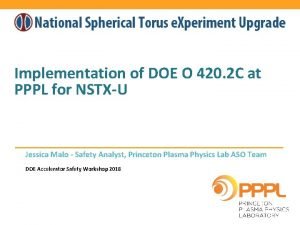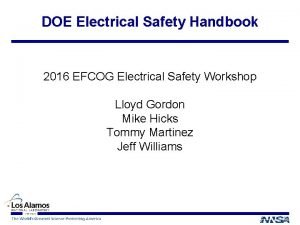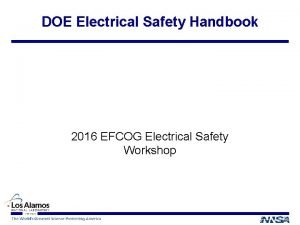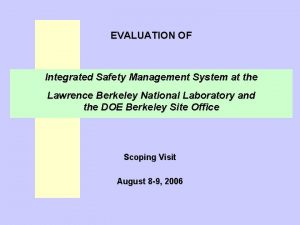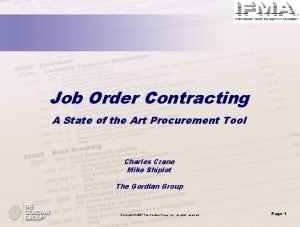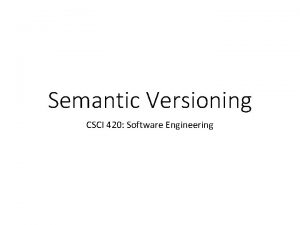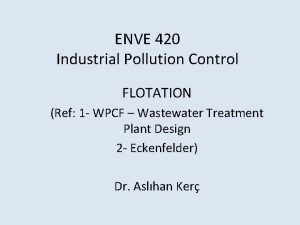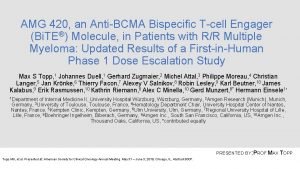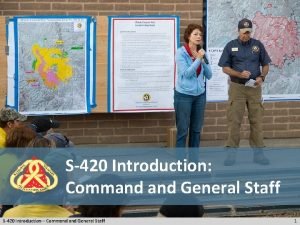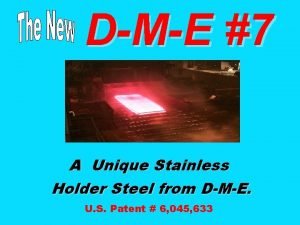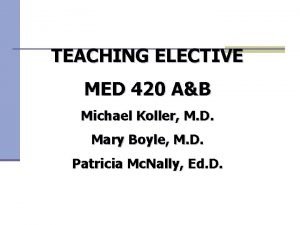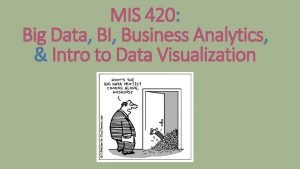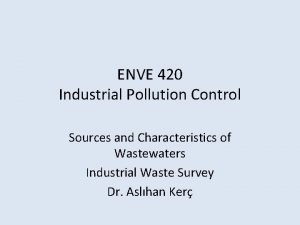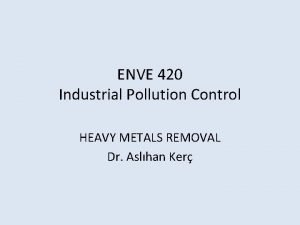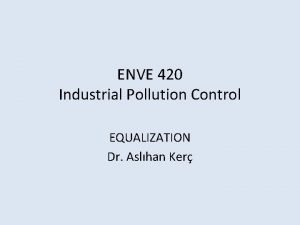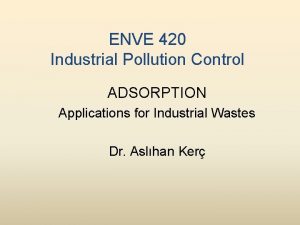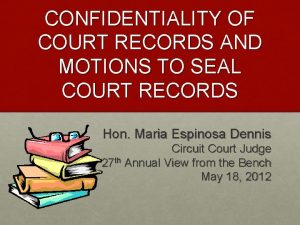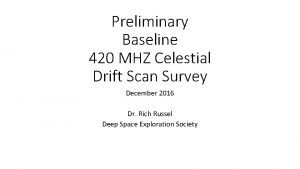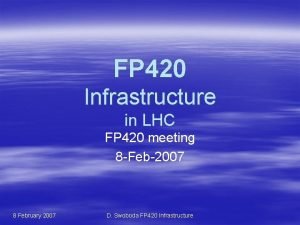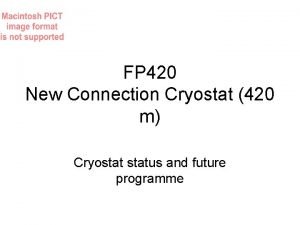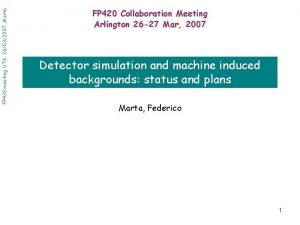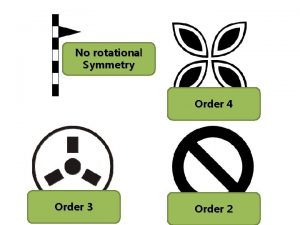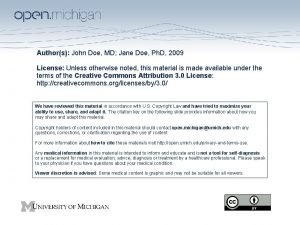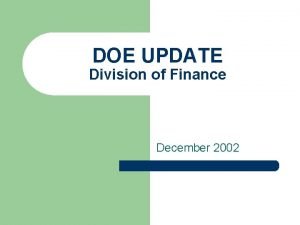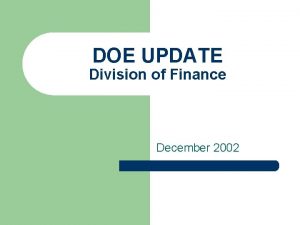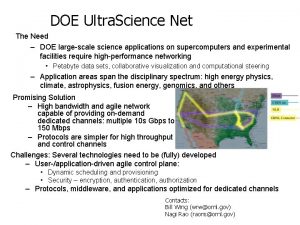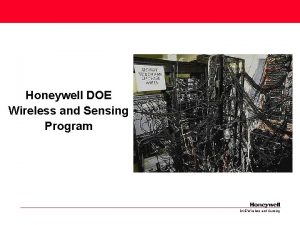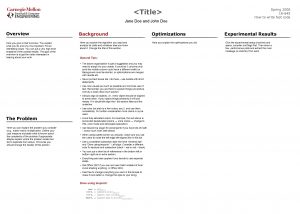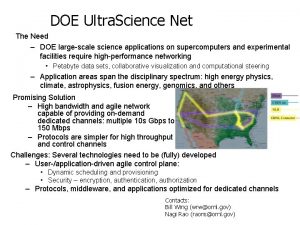Implementation of DOE Order 420 2 C Safety







![Implementation § Two Types of Exemptions § 3. c. [1] Non-Complex & Local Area Implementation § Two Types of Exemptions § 3. c. [1] Non-Complex & Local Area](https://slidetodoc.com/presentation_image_h2/57b23a0f57bcdaba81790c1d69e4c64e/image-8.jpg)

![Implementation – 3. c. [1] Exemption § Applicability Logic Step #2 (Non-Complex & Local Implementation – 3. c. [1] Exemption § Applicability Logic Step #2 (Non-Complex & Local](https://slidetodoc.com/presentation_image_h2/57b23a0f57bcdaba81790c1d69e4c64e/image-10.jpg)
![Implementation – 3. c. [1] Exemption § Listed Examples – Order Lists As Examples Implementation – 3. c. [1] Exemption § Listed Examples – Order Lists As Examples](https://slidetodoc.com/presentation_image_h2/57b23a0f57bcdaba81790c1d69e4c64e/image-11.jpg)
![Implementation – 3. c. [1] Exemption § Listed Examples (cont) § 3. c. [1] Implementation – 3. c. [1] Exemption § Listed Examples (cont) § 3. c. [1]](https://slidetodoc.com/presentation_image_h2/57b23a0f57bcdaba81790c1d69e4c64e/image-12.jpg)
![Implementation – 3. c. [1] Exemption § Listed Examples (cont) § 3. c. [1] Implementation – 3. c. [1] Exemption § Listed Examples (cont) § 3. c. [1]](https://slidetodoc.com/presentation_image_h2/57b23a0f57bcdaba81790c1d69e4c64e/image-13.jpg)
![Implementation – 3. c. [1] Exemption § Reviewed & Approved Exemption § Sandia Implementation Implementation – 3. c. [1] Exemption § Reviewed & Approved Exemption § Sandia Implementation](https://slidetodoc.com/presentation_image_h2/57b23a0f57bcdaba81790c1d69e4c64e/image-14.jpg)
![Implementation – 3. c. [2] Exemption § Site Office Review & Approval § DOE Implementation – 3. c. [2] Exemption § Site Office Review & Approval § DOE](https://slidetodoc.com/presentation_image_h2/57b23a0f57bcdaba81790c1d69e4c64e/image-15.jpg)







![Other Changes/Issues § DOE Secretarial Officer/NNSA Administrative Approvals § 5. a. [2] #1 - Other Changes/Issues § DOE Secretarial Officer/NNSA Administrative Approvals § 5. a. [2] #1 -](https://slidetodoc.com/presentation_image_h2/57b23a0f57bcdaba81790c1d69e4c64e/image-23.jpg)
![Other Changes/Issues § DOE Secretarial Officer/NNSA Administrative Approvals § 5. a. [3] Approve Field Other Changes/Issues § DOE Secretarial Officer/NNSA Administrative Approvals § 5. a. [3] Approve Field](https://slidetodoc.com/presentation_image_h2/57b23a0f57bcdaba81790c1d69e4c64e/image-24.jpg)





- Slides: 29

Implementation of DOE Order 420. 2 C Safety of Accelerator Facilities Timothy S. Stirrup Industrial Facilities Safety Basis Sandia National Laboratories, New Mexico Sandia National Laboratories is a multi-program laboratory managed and operated by Sandia Corporation, a wholly owned subsidiary of Lockheed Martin Corporation, for the U. S. Department of Energy’s National Nuclear Security Administration under contract DE-AC 04 -94 AL 85000.

Background § Update to Department of Energy (DOE) Order (O) § § § DOE O 5480. 25 – November 1992 DOE O 420. 2 – November 1998 DOE O 420. 2 A – January 2001 DOE O 420. 2 B – July 2004 DOE O 420. 2 C – July 2011 § Update Drafted Through Cooperative Effort § DOE Office of Safety, Security, & Infrastructure (Lead by Scott Davis, SC-31. 1) § Accelerator Safety Workshop(s) § Planned Re-Write Meetings § Update to Encourage Dialog with Site Office

Background § Formal Revision Process § Justification Memo (JM) – 09/2010 § Directives Review Board (DRB) – 05/2011 § Formal Revision of the Order (Rev. Com) – 03/2011 § Order Revisions Included: § § § Accelerator Definitions Approval Authorities Minimum Program Requirements Exemptions/Equivalencies Removed Duplications § No New Significant Requirements for Applicable/Regulated Accelerators

Background § Exclusions Are Now Exemptions § § All “Accelerators” Are Now In Device/Facility Exemption from Section 4 Requirements Meant to Establish Minimum Criteria Where 420. 2 C Applicable Meant to Exempt Devices Already Exempted in Other Directives (e. g. , RGDs) § Exemptions May Create Potential 10 CFR 830 Implications § Exempted Devices are Still Accelerators § 10 CFR 830 Definition of Nonreactor Nuclear Facility “…Does Not Include Accelerators And Their Operations…”

Background § Equivalency (to Address 10 CFR 830 Implications) § The DOE PSO/NNSA Administrator may specify alternate safety standards, requirements or DOE Directives that provide equivalent (or greater) protection in lieu of or in addition to the requirements of this Order § These alternate standards would be primarily for those accelerator facilities or modules thereof and their operations when they contain, use or produce fissionable materials in amounts sufficient to create the potential for criticality based on the configuration of the materials § Primary NNSA/DNFSB Issue During Rev. Com § If Accelerator Begins to Reach Potential for Criticality – Then Discuss with Site Office to Determine Course of Action

Essential Order Requirements § Section 4 Requirements for Applicable/Regulated Accelerators § § § (1) Accelerator Safety Envelope (2) Safety Assessment Document (3) Clearly Defined Roles & Responsibilities (Training) (4) Unreviewed Safety Issue (5) Accelerator Readiness Review (6) Current Listing of Accelerators § Including 3. c. [2] Exemptions § Including 3. c. [3] Equivalency

Implementation § All Accelerator Devices In The Order § Changes How Look at Definition of Accelerator § Creates “New Class” of Accelerators § May Include Radiation Generating Devices (RGDs) Not Traditionally Considered Accelerators Under Old Order § Exemptions Closely Follow Previous Exclusions § No Expected Changes to Currently Identified “Regulated” Accelerators
![Implementation Two Types of Exemptions 3 c 1 NonComplex Local Area Implementation § Two Types of Exemptions § 3. c. [1] Non-Complex & Local Area](https://slidetodoc.com/presentation_image_h2/57b23a0f57bcdaba81790c1d69e4c64e/image-8.jpg)
Implementation § Two Types of Exemptions § 3. c. [1] Non-Complex & Local Area Impacts § Majority of RGDs § Contractor Approved § Internally Maintain List § 3. c. [2] DOE Local Field Office Approval § Limited # of Accelerators § DOE Site Office Approval § Provide List to Site Office

Implementation – Applicability § Applicability Logic Step #1 (Accelerator Definition) § Applicability: RGD Create A Radiological Area § Radiation Area, High Radiation Area, or Very High Radiation Area § Accessible to Individuals § Define Accessible to Individuals § Likely Site Specific – Area Within Shield Walls ~ Yes – Area Within Equipment ~ No § Applicability: RGD Create an Airborne Radiological Area § No Radiological Area or Airborne Radiological Area – Then Not Accelerator
![Implementation 3 c 1 Exemption Applicability Logic Step 2 NonComplex Local Implementation – 3. c. [1] Exemption § Applicability Logic Step #2 (Non-Complex & Local](https://slidetodoc.com/presentation_image_h2/57b23a0f57bcdaba81790c1d69e4c64e/image-10.jpg)
Implementation – 3. c. [1] Exemption § Applicability Logic Step #2 (Non-Complex & Local Area Impacts) § Define Non-Complex (site specific) § Equivalent to a device in a “single-room” or defined area with access control that can be operated by a single operator either proximate to the device or from a single control area § Define Local Area Impact (site specific) § Area within 100 m of the facility § Corresponds with “low hazard classification” § 3. c. [1] Exemption Applies Only If Non-Complex AND Local Area Impacts
![Implementation 3 c 1 Exemption Listed Examples Order Lists As Examples Implementation – 3. c. [1] Exemption § Listed Examples – Order Lists As Examples](https://slidetodoc.com/presentation_image_h2/57b23a0f57bcdaba81790c1d69e4c64e/image-11.jpg)
Implementation – 3. c. [1] Exemption § Listed Examples – Order Lists As Examples Only § 3. c. [1] (a) (#1) Current Generating Device § Device’s primary function is to generate electrical current § 3. c. [1] (a) (#2) Exempt RGD § Device is an exempt-shielded or shielded class radiation generating device (RGD). An exempt-shielded or shielded class RGD may be considered as one of the following examples: – – – Inherently safe Certified cabinet X-ray diffraction or fluorescence analysis equipment Other shielded RGD Portable or mobile radiography RGD not using a radiological source
![Implementation 3 c 1 Exemption Listed Examples cont 3 c 1 Implementation – 3. c. [1] Exemption § Listed Examples (cont) § 3. c. [1]](https://slidetodoc.com/presentation_image_h2/57b23a0f57bcdaba81790c1d69e4c64e/image-12.jpg)
Implementation – 3. c. [1] Exemption § Listed Examples (cont) § 3. c. [1] (c) (#1) X-ray <10 Me. V § Device is a single beam, “bench-top” sized, x-ray generator, with an accelerating potential below 10 Me. V and may be operated by a single operator in accordance with American National Standards Institute (ANSI) N 43. 3 or other consensus standard. § 3. c. [1] (c) (#2) Neutron Generator < 600 ke. V (accelerating potential) § Device is a “bench-top” sized, neutron generator, with an accelerating potential below 600 ke. V and may be operated by a single operator in accordance with the National Council on Radiation Protection and Measurements (NCRP) or other consensus standard.
![Implementation 3 c 1 Exemption Listed Examples cont 3 c 1 Implementation – 3. c. [1] Exemption § Listed Examples (cont) § 3. c. [1]](https://slidetodoc.com/presentation_image_h2/57b23a0f57bcdaba81790c1d69e4c64e/image-13.jpg)
Implementation – 3. c. [1] Exemption § Listed Examples (cont) § 3. c. [1] (b) Single Room Device § Device is a room-sized accelerator with a single external and/or extractable beam, an active safety system, and the room has a single point of entry § 3. c. [1] (d) Unmodified Commercially Available § Device is unmodified and commercially available § Examples include, but are not limited to, electron microscopes, ion implant devices, and x-ray generators; additional equipment may also include other types of semiconductor equipment and commercially available research accelerators
![Implementation 3 c 1 Exemption Reviewed Approved Exemption Sandia Implementation Implementation – 3. c. [1] Exemption § Reviewed & Approved Exemption § Sandia Implementation](https://slidetodoc.com/presentation_image_h2/57b23a0f57bcdaba81790c1d69e4c64e/image-14.jpg)
Implementation – 3. c. [1] Exemption § Reviewed & Approved Exemption § Sandia Implementation Recommendation § 3. c. [1] Other Contractor Safety Basis Approved § Non-Complex AND Local Area Impacts Only § Submittal of Exemption Request to SB § Long lead time for Evaluation and Justification – Non-Complex – Local Area Impacts Only § Dialog with Site Office
![Implementation 3 c 2 Exemption Site Office Review Approval DOE Implementation – 3. c. [2] Exemption § Site Office Review & Approval § DOE](https://slidetodoc.com/presentation_image_h2/57b23a0f57bcdaba81790c1d69e4c64e/image-15.jpg)
Implementation – 3. c. [2] Exemption § Site Office Review & Approval § DOE O 420. 2 C 3. c. (2) Exemption § DOE May Approve Other Accelerator Exemptions, In Addition To Those Examples Listed In Paragraph 3. C. (1), From The Requirements Of This Order In Accordance With The Provisions Of Paragraph 5 Of This Order § DOE Field Element Manager Approval § No Documented Approval Process To Date § Long Lead Time For Contractor SB Review & Justification § Longer Lead Time For DOE Site Office Review & Approval § Likely Iterative Process

Sandia Implementation § Use of Existing Primary Hazard Screen (PHS) System/Process § Logic Based Question & Answer Hazards Identification Tool § Used to Evaluate and Assign Hazard Classification § Additional Question Added § Question 1 k. Does the operation involve a device capable of creating a radiological area? § Note: By definition, radiological areas must be accessible to individuals otherwise the area is not a radiological area. § Answers § If “no, ” then not an accelerator. § If “yes, ” then fill out logic table to determine applicability.

Sandia PHS Question Logic RGD creates Rad Area? Y Noncomplex & Local? N C(1) Exempt? (7 SNL) Y OK C(2) Exempt Accelerator Y N Y C(2) Exempt? (SSO) N Accelerator C(1) Exempt Accelerator

Sandia Implementation

Sandia Implementation

Sandia Implementation

Sandia Implementation § One Year Implementation for Incorporation of Annual PHS Updates § PHS Documents Decision Process § PHS Generates Required List § Regulated Accelerators § 3. c. [2] Exemptions § 3. c. [3] Equivalency

Supporting Slides
![Other ChangesIssues DOE Secretarial OfficerNNSA Administrative Approvals 5 a 2 1 Other Changes/Issues § DOE Secretarial Officer/NNSA Administrative Approvals § 5. a. [2] #1 -](https://slidetodoc.com/presentation_image_h2/57b23a0f57bcdaba81790c1d69e4c64e/image-23.jpg)
Other Changes/Issues § DOE Secretarial Officer/NNSA Administrative Approvals § 5. a. [2] #1 - Approve the Safety Envelope for accelerator facilities where site boundary consequences for credible postulated accident scenarios potentially exceed 1 rem (0. 01 Sv) § 5. a. [2] #2 - Approve the Safety Envelope for accelerator facilities where site boundary consequences for credible postulated accident scenarios potentially exceed Emergency Response Planning Guide ERPG-2
![Other ChangesIssues DOE Secretarial OfficerNNSA Administrative Approvals 5 a 3 Approve Field Other Changes/Issues § DOE Secretarial Officer/NNSA Administrative Approvals § 5. a. [3] Approve Field](https://slidetodoc.com/presentation_image_h2/57b23a0f57bcdaba81790c1d69e4c64e/image-24.jpg)
Other Changes/Issues § DOE Secretarial Officer/NNSA Administrative Approvals § 5. a. [3] Approve Field Element Manager recommendations that require alternate safety standards, requirements or DOE Directives as they are applied to accelerator facilities in accordance with paragraph 3. c. (3) and ensure the appropriate DOE and ANSI standards are adequate to address the hazard. § 5. a. [4] Grant equivalencies or exemptions from the requirements of this Order, as requested by the Field Element Managers.

Other Changes/Issues § DOE Field Element Managers Approve The Following Except As Provided In Paragraph 5. a. (2): § (a) Accelerator Safety Envelope (ASE); § (b) Start of commissioning activities after ensuring that an appropriate Accelerator Readiness Review (ARR) has been conducted; § (c) Start of routine operations; § (d) Restart of an accelerator facility or activity after a DOE-mandated shutdown because of an USI or ASE violation; § (e) Activities that justify a USI; § (f) Decommissioning activities; and § (g) Exemption/Equivalency request in accordance with paragraphs 3. c. (2) and 3. c. (3).

Definitions § Radiation Generating Device: A device that generates ionizing radiation (e. g. , neutrons, x-rays, or bremsstrahlung) intentionally or incidentally when energized. § Accelerator: A device [e. g. , RGD] employing electrostatic or electromagnetic fields to impart kinetic energy to molecular, atomic or sub -atomic particles and capable of creating a radiological area [DOE O 420. 2 C] § Radiological Area: Any area within a controlled area defined in 10 CFR 835 as a radiation area, high radiation area, very high radiation area, contamination area, high contamination area, or airborne radioactivity area [10 CFR 835]

Definitions § Controlled Area: Any area to which access is managed by or for DOE to protect individuals from exposure to radiation and/or radioactive material [10 CFR 835] § Radiation Area: Any area, accessible to individuals, in which radiation levels could result in an individual receiving an equivalent dose to the whole body in excess of 0. 005 rem (0. 05 m. Sv) in 1 hour at 30 centimeters from the source or from any surface that the radiation penetrates [10 CFR 835] § Airborne Radioactivity Area: (1) The concentration of airborne radioactivity, above natural background, exceeds or is likely to exceed the derived air concentration (DAC) values listed in appendix A or appendix C of this part; or (2) An individual present in the area without respiratory protection could receive an intake exceeding 12 DAC-hours in a week [10 CFR 835]

Definitions § Accelerator Operations: Those activities of an accelerator and any associated accelerator facilities that are bounded by the Safety Assessment Document. Accelerator operations (and post operations) include the production, dispensing, analysis, movement, processing, handling and other uses, and storage of radioactive material within the accelerator facility. § Radiation: Ionizing radiation (alpha particles, beta particles, gamma rays, X-rays, neutrons, high-speed electrons, high-speed protons, and other particles) capable of producing ions.

Definitions § Accelerator Facility: The accelerator and associated roads within site boundaries, plant and equipment utilizing, or supporting the production of, accelerated particle beams and the radioactive material created by those beams to which access is controlled to protect the safety and health of workers, the public or the environment. § The term facilities includes injectors, targets, beam dumps, detectors, experimental halls, non-contiguous support and analysis facilities, experimental enclosures and experimental apparatus utilizing the accelerator, etc, regardless of where that apparatus may have been designed, fabricated, or constructed, including all systems, components and activities that are addressed in the Safety Analysis.
 Doe order 420
Doe order 420 Via optica
Via optica Doe electrical safety handbook
Doe electrical safety handbook Doe electrical safety handbook
Doe electrical safety handbook Doe integrated safety management
Doe integrated safety management State of the art contracting
State of the art contracting Mini metric olympics worksheets answers
Mini metric olympics worksheets answers Arras penitenciais
Arras penitenciais Major minor patch build
Major minor patch build 84 as a product of prime factors in index form
84 as a product of prime factors in index form 648 factor tree
648 factor tree Position vector definition
Position vector definition Enve420
Enve420 Hvs420
Hvs420 Amg 420 discontinued
Amg 420 discontinued S-420 class
S-420 class Index currency option notes
Index currency option notes Hardenable 420 f
Hardenable 420 f Thursday420
Thursday420 Electivemed
Electivemed Mis 420
Mis 420 420 internet marketing
420 internet marketing Enve420
Enve420 Enve420
Enve420 Enve420
Enve420 Enve420
Enve420 Motion to determine confidentiality of court records
Motion to determine confidentiality of court records Resolucion 420/2011
Resolucion 420/2011 420
420 420 marketing campaigns
420 marketing campaigns
